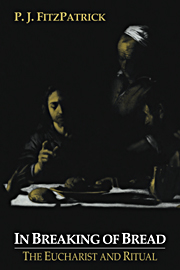5 - Eucharistic proclamation
Published online by Cambridge University Press: 05 November 2009
Summary
ACQUISITIONS AND AGENDA
I have claimed that older and newer accounts alike of the eucharistic presence divorce appearance from reality. I have claimed that something else is needed, but that no account can ignore the historical setting of inherited language, or the forces and tendencies that language harbours. And I have claimed that we need to pass from talk in terms of disguises to talk in terms of signs, if we are not to fall back into the confusions common to all the accounts we have met.
These claims I have made in succession over the four preceding chapters, but the sequence has been offset by other themes running through all we have seen so far. The themes are going to occupy us in what follows, so I set them down here, grouping them under three headings.
1. Ritual and belief. I gave a Latin title to one of the sections in the preceding chapter. Ritus servandus, ‘Ritual to be followed’, expressed my dissatisfaction with the accounts I had been examining – neither older nor newer did justice to the Eucharist as a shared and inherited ritual. The scholastic texts of the first chapter used a quasi-physical terminology, and its remoteness from ritual appeared again in the curious speculations at the end of the fourth chapter. The more recent texts given in the second chapter used categories of naming and giving that seemed only accidentally linked with the ritual they were meant to elucidate; and the fourth chapter once more shewed where this approach could lead.
- Type
- Chapter
- Information
- In Breaking of Bread , pp. 175 - 246Publisher: Cambridge University PressPrint publication year: 1993

